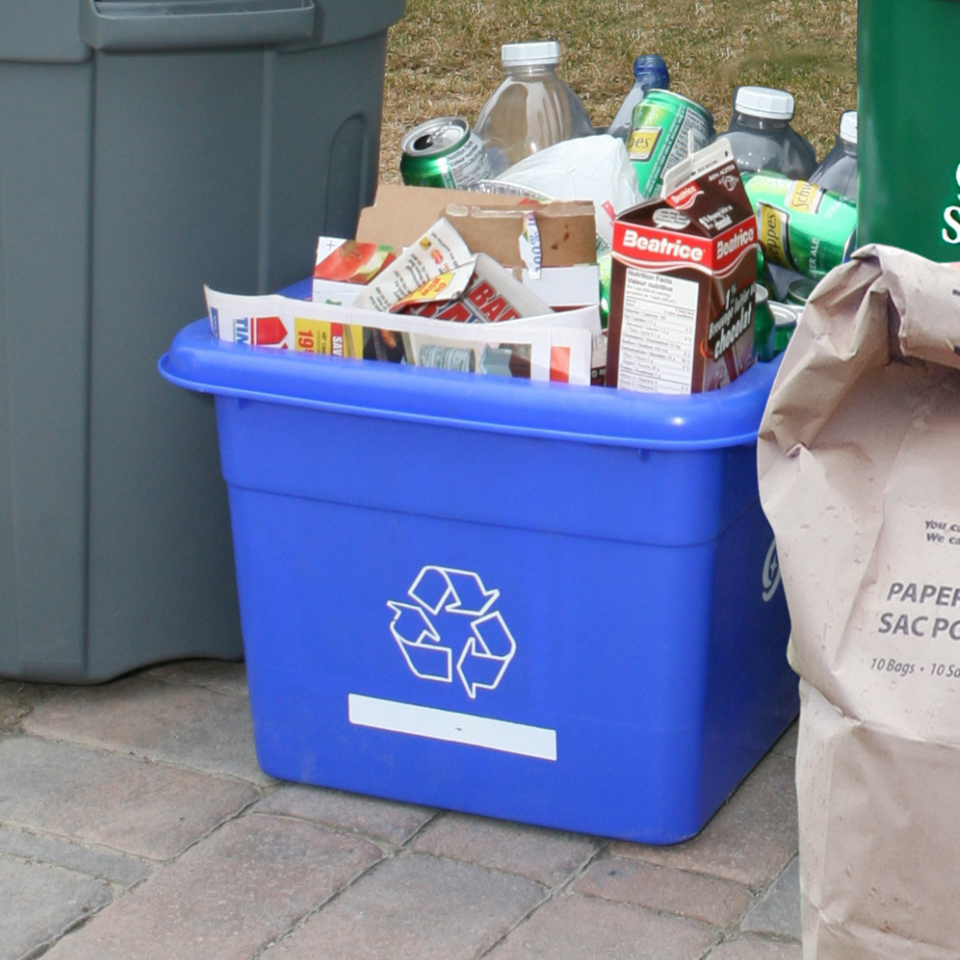The long-talked about Blue Box recycling program transition from municipality responsibility to producers is well underway, with Circular Materials Ontario having taken over on April 1.
That said, curbside users won’t have noticed much of a difference, other than blue boxes no longer provided to residents free of charge by the city — a change the city made last year.
Although Circular Materials Ontario has been responsible for curbside pickup since April 1, it’s under a transition plan in which the city continues prior pickup efforts until the end of the year and is compensated for their services.
When the transition is fully completed effective Jan. 1, 2026, it’s unclear what might change.
The key question at the moment is whether the city’s Yellow Box program will continue, which allows non-residential establishments to have recyclables picked up at the curbside.
Although the Yellow Box program has continued for 2025, non-residential users aren’t eligible under the new producer-responsibility program. This means that if the Yellow Box program were to be maintained beyond Jan. 1, 2026, the city would be responsible for it.
During this week’s finance and administration committee meeting of city council, members voted to forward a business case to potentially retain the Yellow Box program for consideration during 2026 budget talks later this year.
“If the Yellow Box program were canceled, the participating establishments could deliver their recycling to the Frobisher Depot in Sudbury or any of the diversion areas within the three landfill sites and Walden small vehicle transfer station,” according to a report by city Environmental Services director Renee Brownlee.
“However, self-delivery is an inconvenient option and may result in the recyclables ending up in the garbage to consume landfill space.”
There are currently 175 participants in the city’s Yellow Box program, which is offered at an annual service fee of $119.
The non-residential gap in the producer-pay recycling pickup scheme is something city staff have been advocating for the province to fill for years, but has apparently not yielded the desired results.
Other changes may come on or after Jan. 1, 2026, at which time producers will be able to alter the province’s recycling program.
“Producers will be able to make changes to what can be placed in the blue box, frequency of collection, collection container, collection day etc. and are responsible for communicating all program details to eligible sources,” according to Brownlee’s report.
Meanwhile, shifting recycling pickup responsibility to producers is anticipated to help the city shave approximately $4 million from its 2025 budget, and $2 million annually beginning in 2026.
From a portion of these savings, city council members have already pulled $475,000 annually to fund a long-discussed mattress diversion program, through which old mattresses are being diverted to a recycling facility rather than eat up space at municipal landfill sites.
The provincially mandated producer-pay recycling pickup program is intended to standardize processes across more than 250 municipalities and shift the cost to operate it from communities to waste producers.
Roadside recycling collection in downtown Sudbury won’t be affected by these changes. This service is provided twice per week via a dedicated truck paid for by Downtown Sudbury.
Tyler Clarke covers city hall and political affairs for Sudbury.com.




